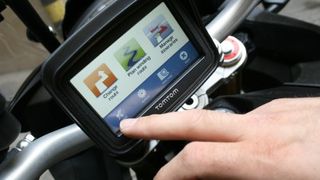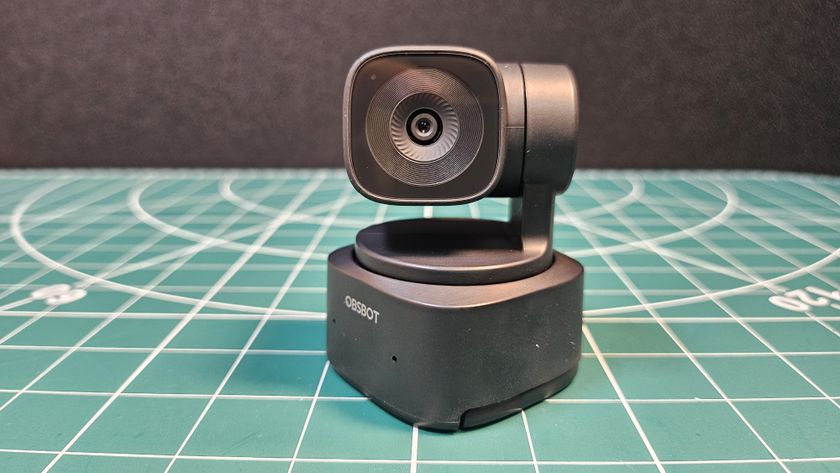TechRadar Verdict
A top sat-nav unit for a motorcyclist, works brilliantly and deserves consideration if you're in the market for one. Note however there is no car charger or mount included, in contrast with its biggest rival, Garmin's Zumo350.
Pros
- +
Competitively priced
- +
Top brand
- +
Ease of use
- +
Excellent route-finding
Cons
- -
Bulky
- -
No car accessories
- -
Fitting kit lacking
- -
No live traffic update
Why you can trust TechRadar
The rise of the personal GPS satellite navigation system really took off around a decade ago. Initially derided by the general driving public, you'll rarely see a car or van without one stuck to the inside of a windscreen in 2013. But, what about on a motorcycle?
There are a few systems out there dedicated to bikes, though only a couple are actually worth your while, and TomTom's new Rider is one of them.
If you think faffing around with an A3 sized map in your car is a pain, try having to unpack one each time you realise you're lost and on a bike. All part of the fun, perhaps, but in a world where time is becoming increasingly precious, even for recreation and holiday pursuits, you want to get where you're going as quickly as possible. TomTom's Rider aims to ensure this happens.
Easy Rider
The waterproof Rider weighs in at 353-grams, filling dimensions of 130 x 101 x 53mm. It features Bluetooth for hands-free phone calls and data-exchange, USB 2.0 for connectivity to a computer, and has internal memory but no SD slot. The glove-friendly 4.3" screen is of the multi-touch variety, and has an option to brighten, making it easier to read on sunny days, and also a small rim which occasionally acts as the screen's sun visor.
The unit comes loaded with free 'Lifetime' maps for 45 countries, and can be updated throughout the year with the latest road network changes, addresses and so on. It also has all the UK Speed Camera fixed and mobile sites included, which can be updated daily via the Map Share community. You are able to plan your route on computer before uploading them to the device, you can also record your trip in entirety and then share it, too.
On the hardware side, it comes with a fitting kit that works on 'most' bikes, a bike charging dock and a USB 2.0 cable.
Performance
To give the Rider a good workout, we used it in two different arenas – on the bike and also in a car. We also did a back-to-back test with one its main rivals, too. First up was using the fitting kit, which we tried out on an Adventure based Aprilia Caponord, and then a sports biased Ducati Panigale 1199.
While the Rider can be wired directly into the bike's battery, that's a lengthy process when routing the wiring and so on. As a motorcyclist who changes bikes often, we find trying a 'quick' fit can tell a lot about the kit provided.

The Rider's fitting kit is good enough for the job, allowing multiple positioning points. On the Caponord, it fitted to the bar easily and with a minimum of fuss. On the Panigale with its tighter cockpit, it took a bit of fiddling and does obscure the standard dash a bit, though this is almost expected on a sportsbike.
The kit isn't quite as complete as some of its rivals though, missing a few connectors that expand fitment options. However it has enough to fit the Rider at least somewhere usable, if not perfectly aligned.
Touch with gloves
Once on, the touch screen works very well with all but the thickest of gloves. Wearing a winter set may mean prodding a tiny bit harder. The menu has several options, but the one we're most interested in is where we're going. An address can be inputted via a full or partial address, or by postcode.

You can also peruse the map and place your own destination marker, if for whatever reason it can't find exactly where you want to go. As for places of interest, petrol stations, food and fuel points will appear on the screen if nearby, but can also be found in the Rider's extensive database.
The tactile interface with the Rider works very well, unless you're already used to a different sat nav. One of the biggest issues faced with a sat nav, is that long term usage of one brand can make changing to another one challenging. From the way the map or information on the screen is presented, to how addresses are searched, the re-learning process can be off-putting.

From a perspective of a sat-nav virgin however, everything couldn't be clearer, easier to use or more intuitive. Directions are easily followed by detailed mapping and an excellent graphical system that helps reduce any wrong turns, or the risk of misreading the unit, to a minimum.
Battery life
Neither test bike provided much of an issue with the Rider. It worked as expected in all areas, even down to uploading completed journeys. We also squeezed more than four hours of constant use from the battery, which isn't bad considering how well illuminated the screen is.

The back-to-back test was interesting, though. Setting it in a car this time, alongside one of its main rivals, an identical postcode was entered into both. The first thing you always look for once the route is complete, is the arrival time. The Rider claimed to arrive a full 30 minutes before the other. Knowing the journey and the destination area well, we were curious to see how it was going to make up the time.
Just after two-thirds' distance on a 100-mile trip, the TomTom insisted on one route and the rival another. We took the Rider's route and arrived nearly 20 minutes earlier. Going back on ourselves and taking the other suggested route, we arrived 18 minutes later. So, in this instance the Rider's route-finding was more effective, a fact backed up via another journey the following day using both units.
Verdict
The TomTom Rider is a top sat-nav unit for a motorcyclist, works terrifically well and should be one of only a couple of options you consider if you're in the market for one. However, there are a couple of drawbacks. Firstly, there is no car charger or mount included, in contrast with its biggest rival, Garmin's Zumo350. This lessens the appeal of the overall buy slightly, as without spending extra on accessories, it's for bike only.

And while the unit's size is comparable with the Garmin's, it's actually a bulkier item that takes up more space, especially when fitting to a sportsbike. A few more options for fitment in the kit would also be nice. However, none of this should detract that as a sat nav it does exactly what it should with a minimum of fuss, and displays slightly superior route-finding capabilities on the evidence found. Those few extra minutes could make all the difference.














